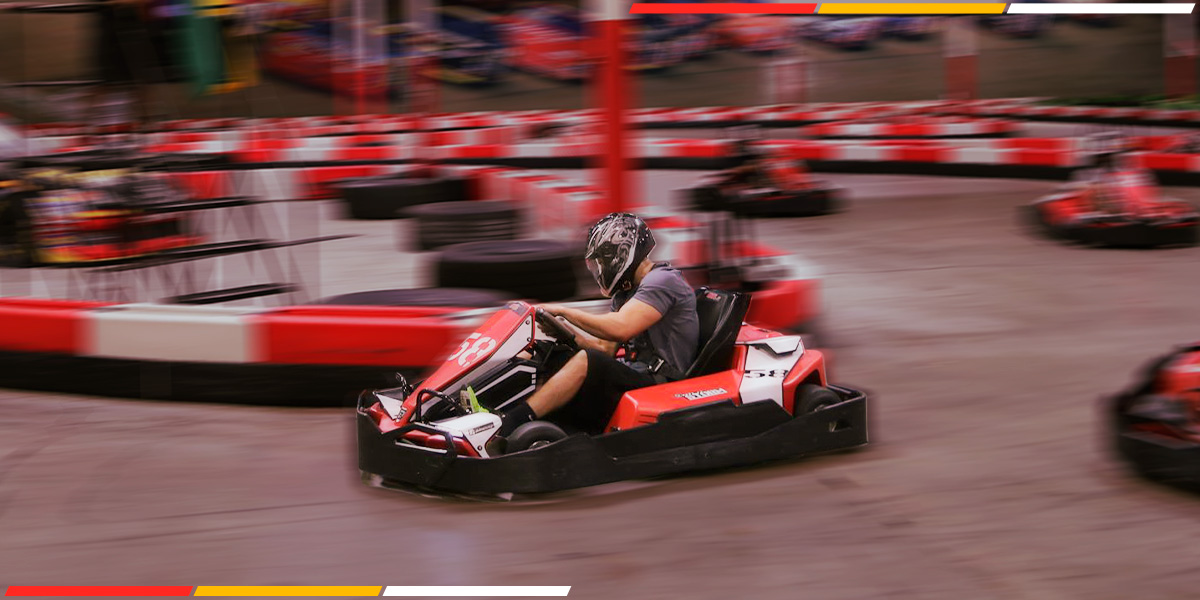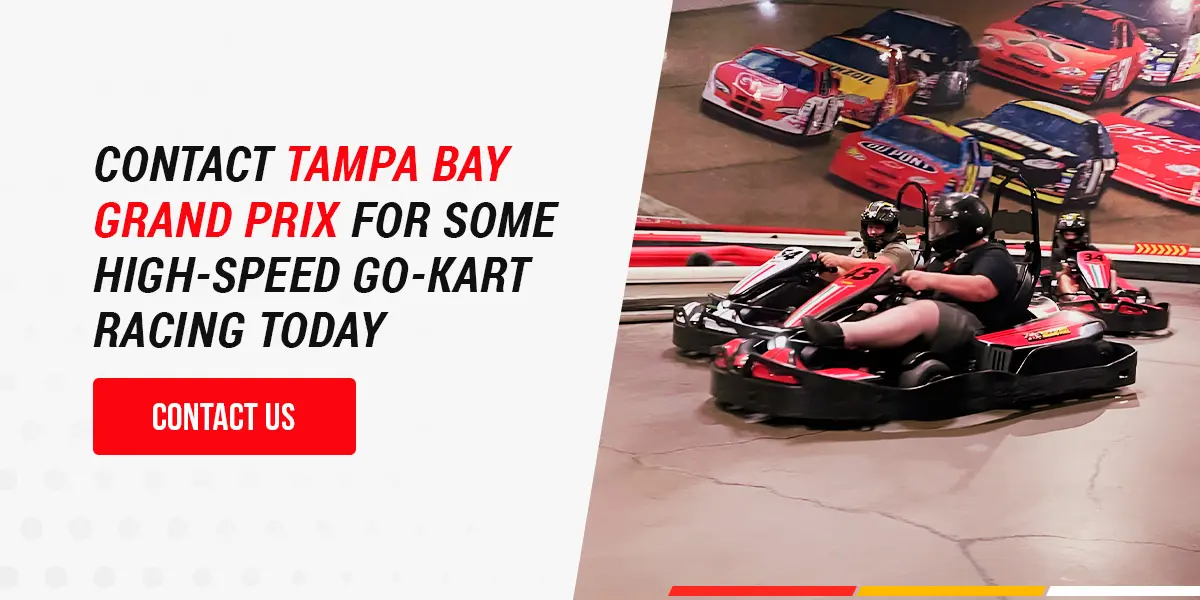How Fast Do Go-Karts Go?

Drivers of all skill levels love go-karts for their exhilarating combination of speed and control. Competing with friends on the racetrack can be a great rush, and speed makes the experience all the better. When it comes to go-kart speed, various factors come into play. Go kart designers understand these factors and build karts that make the most of their components and course conditions for a smooth, fast ride.
So, how fast can a go-kart go? While different factors affect their speeds, the primary factor is engine capacity. The more powerful the engine is, the faster the kart. For fuel-based go-karts, engine capacity is rated in cubic centimeters (cc), which refers to the volume of combustible fuel-air mixture.
What Influences a Go-Kart’s Speed?
To determine the speed go-karts can achieve, it’s essential to consider the factors involved. Various design choices can impact a go-kart’s top speed. Some of the most influential go-kart speed-altering factors include the following.
Classes
Go-karts have varying classes designed for specific age groups and skill sets. These categories feature unique designs, engine sizes and types, and chassis build. Each class has a specific top speed depending on its intended purpose. Here are some of the common go-kart classes and their maximum speeds:
- Superkarts: This category involves high-speed go-karts carrying powerful, 2-stroke, 250 cc engines that can deliver speeds of 150 mph or more. Superkarts are highly competitive and require skilled adult drivers, especially those aspiring for professional racing.
- Endurance karts: These are specialized go-karts built for long-distance, competitive racing. They have robust construction, a durable chassis to withstand continuous racing, and 4-stroke engines designed for reliability and fuel efficiency. While the kart model impacts maximum speeds in this class, they usually hit about 55 mph.
- Rental karts: These are easy-to-use go-karts designed for recreation and casual competitions. Like endurance karts, rental karts have a durable structure that makes them reliable for continuous use. Rental go-kart speed ranges from 30 to 60 mph depending on track design, derived age and driver’s skills.
- Cadet carts: These are smaller karts designed for young drivers. They are light and easy to control with small 60 cc engines that average 50 mph.
- Bambino: These are especially low-powered karts for children under 10 years of age. They have a small 50 cc engine and can reach a top speed of 35 mph.
Engine Type and Capacity
As we touched on at the beginning, the engine is the primary determining factor in a go-kart’s speed. The more power the engine has, the faster it can go. There are two types of go-kart engines: the traditional combustion engine and electric motors. Since combustion engine capacity is rated in cc, the larger the capacity, the higher the speed and acceleration.
Electric motors, which power the popular electric go-karts, also vary in terms of power output measured in kilowatts. Entry-level motors with up to 5 kW can reach speeds of 35 mph, while high-performance motors with over 40 kW hit speeds of 100 mph.
Weight and Build
Other lesser aspects of go-karts that impact their speeds are weight and design. Karts with stronger chassis and heavier build are more durable, but the weight increases air resistance, making them slower than lighter karts with similar engine power. In addition, models with better aerodynamic design allow for higher speeds and acceleration due to streamlined construction.
Gas-Powered vs. Electric Go-Karts
While go-karts have diverse classes, they fall under two divisions characterized by engine type or power supply. These divisions impact how fast a go-kart is.
Gas-Powered Go-Kart Speeds
Unlike motor-powered go-karts, gas-powered karts have internal combustion engines, much like normal vehicles. These karts fit into different groups based on the amount of power they generate, measured by cubic centimeters of displacement. A kart’s class describes the total amount of air sucked into the piston chambers as the pistons move up and down.
With more air in a piston’s chamber, the air-gasoline mixture will be more potent and produce a more powerful combustion in the engine. Go-karts with a higher cc rating mix more air with gasoline and operate at higher speeds. A 50 cc kart can travel up to 35 mph, whereas a 125 cc kart can reach 70 to 80 mph. At 250 cc, the fastest go-karts can travel up to 150 mph.
Electric Go-Kart Speeds
Electric go-karts are similar in design to gas-powered karts, using the same chassis and other similar components. The main differences are in the engine and power supply. Electric karts are equipped with bigger engines, making them heavier than gas-powered karts. Consequently, electric karts have a slower top speed. However, high-performance karts with impressive motor power can match their fastest gas counterparts.
While electric karts’ added engine and power supply weight make them heavier, they also produce more power in less time, resulting in faster acceleration. Therefore, electric karts seem faster on winding courses with fewer straightaways.
Vist Tampa Bay Grand Prix for a Thrilling High-Speed Go-Kart Racing Experience
Depending on factors like engine type and weight, go-karts can travel anywhere from 35 to 150 mph. At Tampa Bay Grand Prix, we have a wide variety of electric karts and challenging tracks where you can test their limits.
The Tampa Bay Grand Prix offers high-precision, Italian-designed electric Pro-Karts designed for competitive indoor go karting. Our karts are configured for the track and reach speeds of 50 mph, promoting safety, efficiency and thrilling speeds.
To find out for yourself which type of go-kart is faster and more reliable, contact Tampa Bay Grand Prix and schedule a race today!


